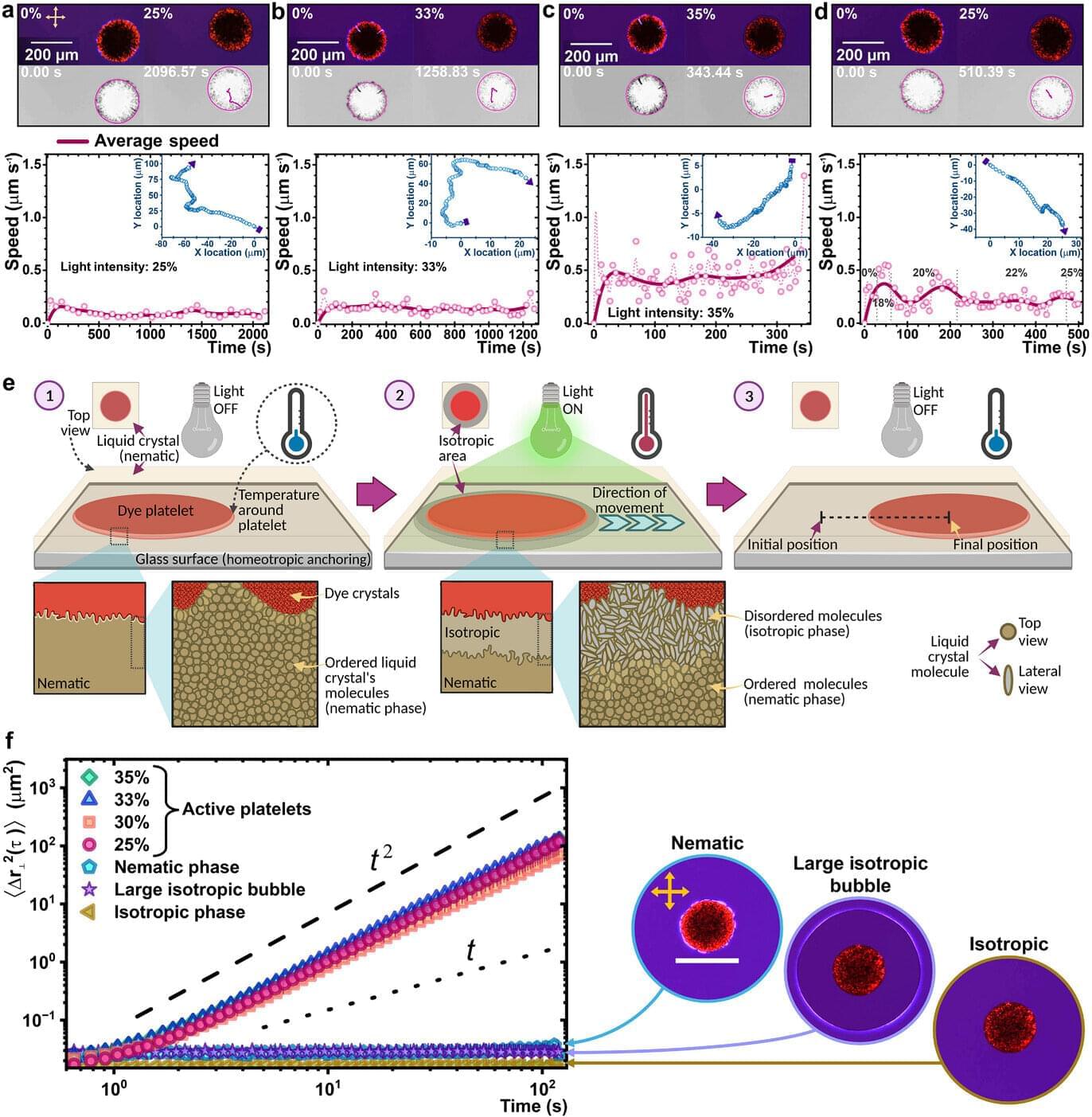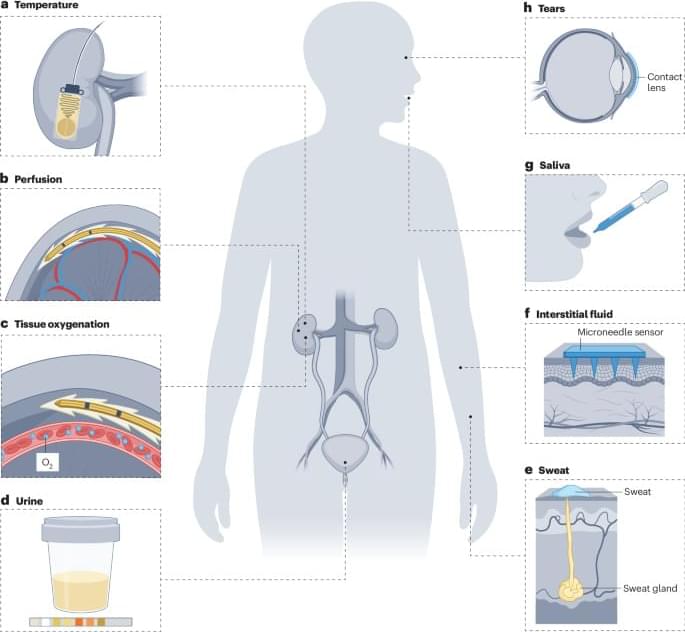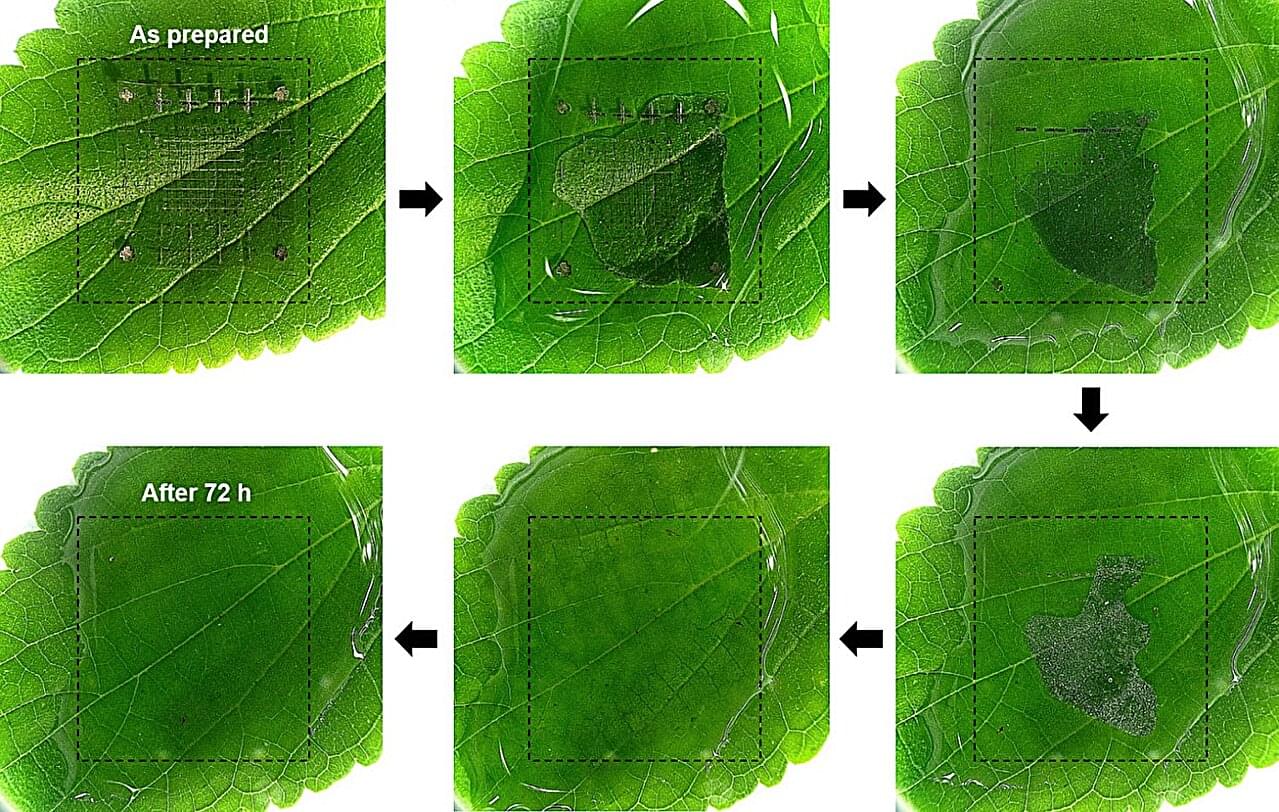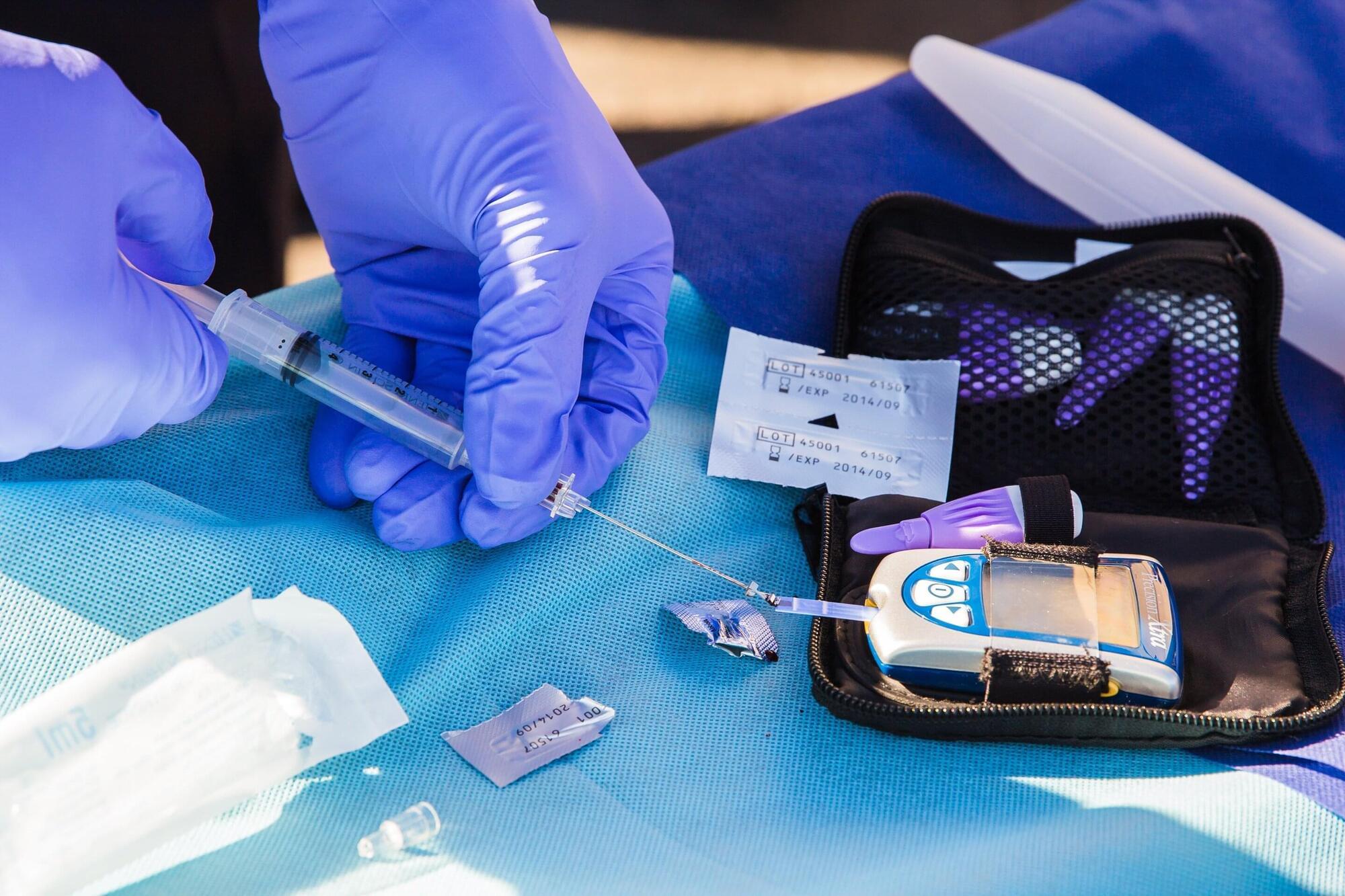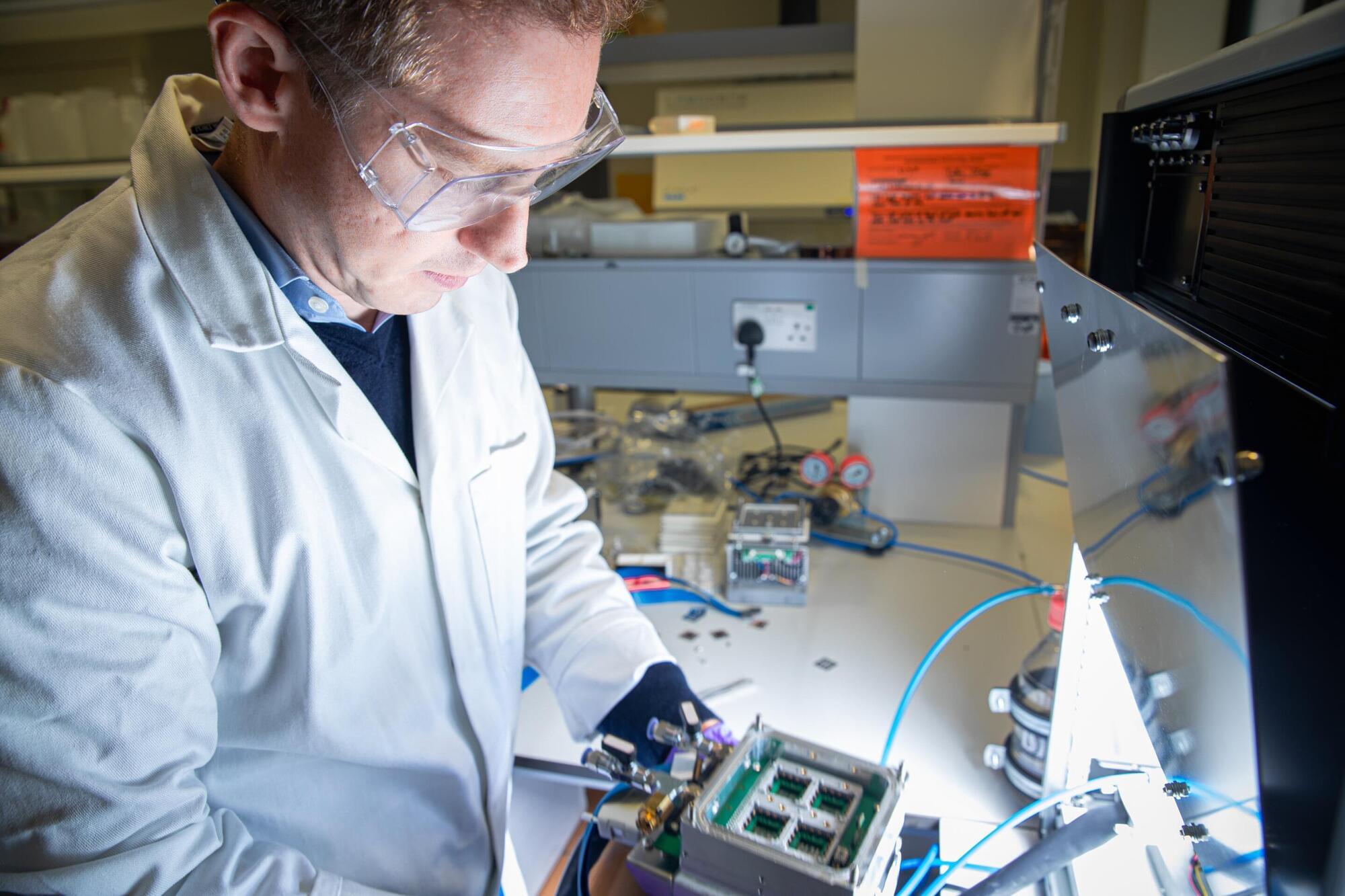Scientists have created tiny disk-shaped particles that can swim on their own when hit with light, akin to microscopic robots that move through a special liquid without any external motors or propellers.
Published in Advanced Functional Materials, the work shows how these artificial swimmers could one day be used to deliver cargo in a variety of fluidic situations, with potential applications in drug delivery, water pollutant clean-up, or the creation of new types of smart materials that change their properties on command.
“The essential new principles we discovered—how to make microscopic objects swim on command using simple materials that undergo phase transitions when exposed to controllable energy sources—pave the way for applications that range from design of responsive fluids, controlled drug delivery, and new classes of sensors, to name a few,” explained lead researcher Juan de Pablo.
